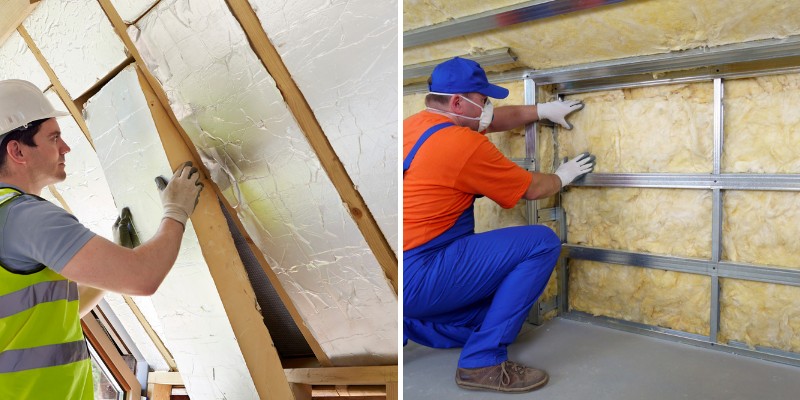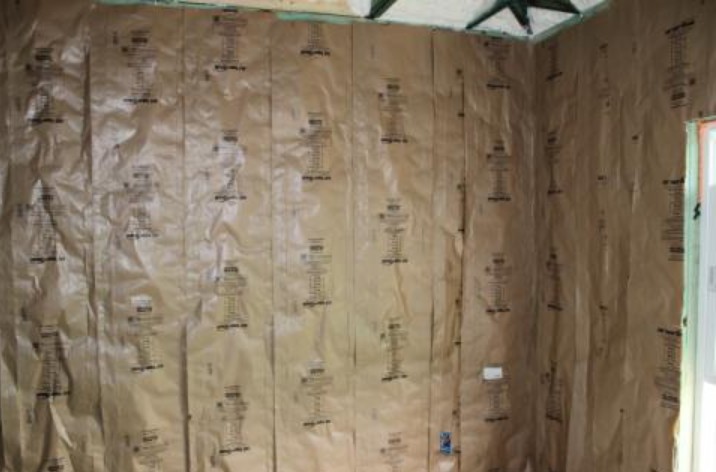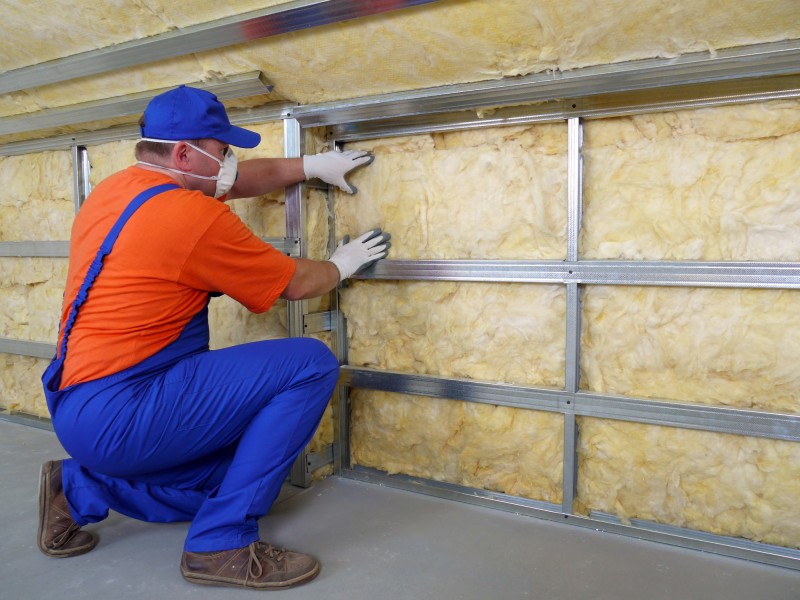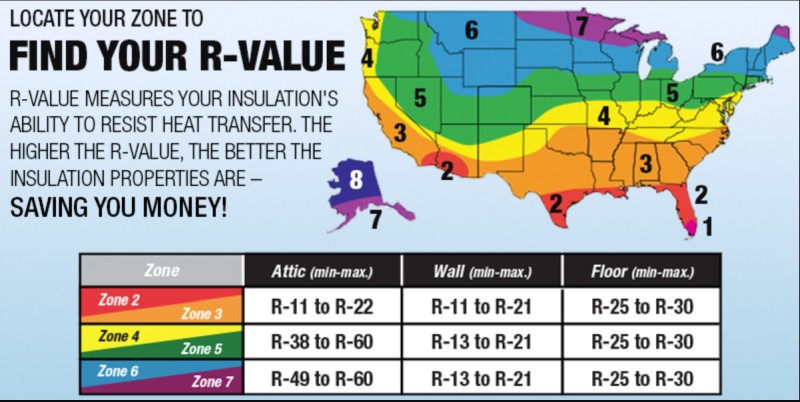Are you debating the ideal insulation for your home? One practical and affordable option is fiberglass, both Faced (Kraft-faced) and Unfaced types. Choosing the right kind is essential for a safe and healthy home environment.

After installing fiberglass insulation, you’ll see immediate, tangible improvements! For instance, you’ll have heightened indoor comfort, increased home sale value, and a marked reduction in your energy costs.
Here I answer questions that often arise about faced vs unfaced insulation. By reading this post, you’ll know what’s best for your particular goals.
Why does insulation matter?
If you install high-quality insulation, you’ll have less air leakage from your home.
Heat always flows from warm spaces to cooler areas. So, during winter months, warm air seeps from your toasty rooms to nippy quarters.
Do you have an unheated basement, attic, or attached garage? If so, warmth from your heating system flows into them.
Throughout summer, outdoor heat infiltrates your home. This thermal invasion can occur through your floors, walls, ceilings, windows and roof.
Meanwhile, your heating and cooling appliances are laboring, compensating for energy loss. The right insulation eases their workload by blocking heat transfer.
Let’s now discuss faced and unfaced insulation in more details:
What is Faced (Kraft-faced) Insulation?
This product has a paper liner on one side, impeding moisture buildup from condensation.
Let’s clarify what condensation means and how it occurs. Whenever warm air meets a cold surface, the vapor in the air changes to water droplets.
Here’s an example of this natural phenomenon. Picture sitting outside on a warm, humid day, holding a glass of iced tea.
Gradually, you see water forming on the glass, dripping down the side. The change in water from a vapor to a liquid is termed “condensation.”
Similarly, condensation occurs inside your home. It happens when warm air moves through your walls to a cooler area.
Consequently, moisture clings to your wall surfaces, attracting mold and mildew. Condensation also leads to wood rot.
Kraft-faced insulation prevents water damage to your walls.
How does Kraft-faced insulation work?
The paper has an asphalt coating, resisting water vapor. In construction terminology, the liner is called a “vapor retarder.” Usually, the insulation R-value is printed on the Kraft paper, pictured here.
What materials comprise faced insulation?
The batts consist of recycled glass and sand. Meanwhile, the paper liner comes from wood pulp, such as bamboo. It’s named for the Swiss-invented “Kraft Process,” making the paper strong and durable.
Here’s another benefit of faced insulation. All its components are sustainable, making it Earth-friendly!
Where can I use faced insulation?
You can apply faced insulation on:
- – a roof with long joists
- – rafter bays
- – an attic ceiling
- – outside walls
- – exterior basement walls
- – crawlspaces
- – floors

When mounting faced insulation, the Kraft paper should be on the side of your living space (see picture above).
In other words, the liner faces the area you heat during winter. For instance, when insulating an attic, the Kraft paper points down, toward your rooms. In a crawlspace, the liner faces upward.
Tabs on the liner help to secure the insulation to your framing, further anchored with a staple gun.
For details on how to mount faced insulation, see this article.
If I used faced insulation, do I need another vapor barrier?
Your local building code will specify whether indoor surfaces require a vapor retarder. If you live in a climate that does, the Kraft paper is usually sufficient.
Note that if you apply extra layers of facing, they can trap vapor between them.
Still, Kraft paper isn’t waterproof. If it gets soaked, its thermal resistance plummets. So, don’t use faced insulation in a humid part of your home, such as a bathroom. In that situation, plastic sheeting is a better vapor barrier.
Are there any drawbacks to faced insulation?
Fire Hazard
Kraft paper is flammable. Thus, you can’t install faced insulation near:
- – chimneys
- – fireplaces
- – light fixtures
- – stoves
- – other heat sources
Are you unsure if faced insulation is safe for your purpose? If so, hire a contractor.
Non-Supplemental
You cannot add faced batts to existing insulation. That’s because moisture can build between the new and old vapor retarders. The result will be mildew, mold, and wood damage.
How much does Kraft-faced insulation cost?
If you hire a contractor, expect to pay between 50 cents and $2 per square foot of wall.
Factors governing the expense include:
- – your geographic location
- – insulation R-value
- – what you’re insulating
Due to pricing variations, get a few quotes from local companies. This way, you’ll have a ballpark figure for what the job will cost.
What is Unfaced Insulation?

This fiberglass product lacks a vapor barrier, as in the photo above. Unlike faced material with its paper tabs, friction holds unlined batts in place.
Where can I install Unfaced Insulation?
Often, homeowners use it to beef up existing insulation, mounting it on top. It also suits indoor living areas where moisture retention won’t occur, such as:
- – dining rooms
- – living rooms
- – home offices
- – the juncture of a floor and ceiling
The brief video below shows how to install unfaced batts over existing attic insulation.
Would you like to soundproof the interior walls of a room? If so, see this article, explaining how to do it yourself with unfaced insulation.
When is Unfaced Batting not an option?
It’s not suitable for stuffy, humid rooms and those having appliances. Such areas are prone to moisture buildup. Hence, with unfaced insulation, there’s a high risk of wood rot, mildew, and mold.
Note that unfaced insulation poses two challenges. First, without a paper liner, the batts are harder to handle than Kraft-faced products.
Secondly, during mounting, it’s tough to keep unfaced material smooth, flush with surfaces.
For these reasons, consider hiring a professional installer.
What will I pay for Unfaced Insulation?
Generally, it costs slightly less than the Kraft-faced type. Figure on paying a contractor 50 cents to $1.75 per square foot of wall. As with faced insulation, pricing varies by:
- – where you live
- – batt R-value
- – what you plan to insulate
Which is Better – Faced or Unfaced Insulation?
Some homeowners ask, “Which is better, Kraft-faced or unfaced insulation?” In terms of their R-values and efficiency, they’re equal.
Although the unfaced type lacks a vapor retarder, it capably stops air leakage, just like faced material.
So, let’s review the key points to remember.
Use Kraft-faced batts for external surfaces and floors, those currently not insulated. The paper liner will restrict moisture buildup. Since Kraft paper is flammable, avoid proximity to sources of heat and flames.
Unfaced batts are appropriate for interior surfaces, soundproofing, and adding to existing insulation.
With professional installation, the pricing difference between the two products is minimal. Faced batting costs 10 to 25 cents more per square foot than unfaced.
Major Savings
Once you’ve completed an insulation project, compare your former and current energy costs. Consider tracking them for about a year.
Your savings should be substantial. Plus, your home will be so much comfier!
What benefits can I expect from home insulation?
When installed properly, the insulation material can:
- – buffer noise
- – conserve natural resources
- – prevent mold, mildew, and wood rot
- – boost your indoor comfort
- – trim your energy bills
How can I gauge insulation quality?
Every insulator has an R-value, a number representing its thermal resistance. The higher the product’s R-value, the more it hinders heat from passing through it. R-values differ by the type of insulation, its density, and width.
The “R-value Rule” consists of insulation standards, enforced by the Federal Trade Commission. Under this regulation:
- – Manufacturers must provide R-values on their insulation packaging.
- – Consumers must receive fact sheets from those who sell and install insulation.
- – New home sellers must include R-values in their sales contracts.
Thanks to these mandates, you can be well-informed when choosing insulation.
What affects the insulation needs of my home?
According to the US Department of Energy (DOE), the optimal R-values depend on your:
- – geographic location and climate
- – type of cooling and heating systems
- – home architecture
- – insulation project
For example, choose a highly rated material for a floor, attic, or cathedral ceiling. Conversely, for a basement, consider products with lower R-values.
Does your region have scorching summers and frigid winters? If so, that’s another case for R-values in the upper range.
How can I know the best R-values for my climate?
To help consumers like you, the DOE has designed a climate zone map. This resource assigns a number to sections of our country with similar weather. For each zone, the DOE gives R-values for insulating an attic, wall, or floor.
Here’s an image of the climate zone map.

To use the map above:
- – Find the zone for your region.
- – Refer to the column of R-values for what you plan to insulate.
Does fiberglass insulation have certain advantages?
Fiberglass is effective, budget-friendly, and widely available. It comes in rolls and precut blankets called “batts.” For this reason, it’s also called “batt insulation,” sold faced and unfaced.
Both types come in a range of sizes and shapes, suiting various sections of your house. Faced and unfaced batts have different purposes.
Related Posts
- Comparison of HardieBacker Cement Board vs Plywood For Tiling Projects
- 6 Great Alternatives to HardieBacker Cement Board
- Comparison of WonderBoard vs GoBoard Used as Tile Backer Boards
- How Much Does it Cost to Furnish a House – Living Room,Bedroom,Kitchen etc
- 5 Benefits of Spray Foam Insulation During Summer
- Here are Some Plumbing Installation Tips For your New Home
Leave a Reply